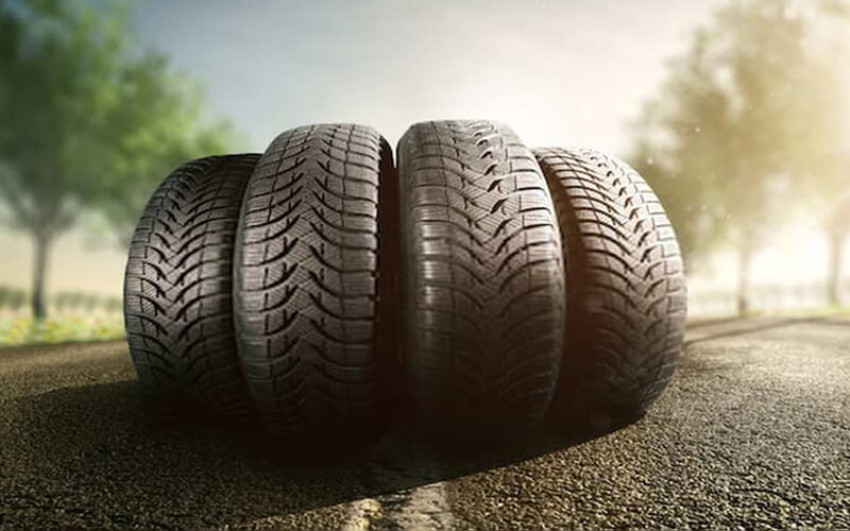
Tyre damage manifests itself in a number of forms and sizes, with varied degrees of severity. No matter how carefully you drive, the tyres will be damaged at some time throughout their life. You must be able to recognise and analyse various types of Tyres Stoke On Trent damage, such as those caused by road debris, potholes, or traffic accidents.
Types:
Wear Just One Side
Improper axle geometry is the most common cause of one-sided wear. Variations from the specified specifications may arise over time as a result of, say, hitting a curb. Wheel alignment damage can take place by lowering a vehicle's height in conjunction with low-profile tyres. While driving, it appears that altered suspension arms cause wheel alignment to deviate from the specific location. Even when put in a fixed position on an axle measurement bench, you must check wheel alignment readings to be within permissible limits, which may catch drivers off guard. However, the manufacturer's alignment rules only apply to cars that have been delivered and may not apply to customised vehicles. As a result, uneven tread wear may become increasingly common. When a vehicle's wheels are not in proper alignment, contact a specialist and realign them to correct the problem.
The Tyre Blew Out
A burst tyre is the most serious and deadly kind of tyre damage you can experience. This occurs when the tyre wall's structural integrity entirely collapses and the tyre's capacity to retain air is lost. A blown tyre has a significant impact on a car's ability to drive, drastically changing how it behaves and posing a risk to other road users.
There are several reasons why tyres can rupture. One of the most frequent is under-inflation, which makes the tyre protrude under the weight of the vehicle, increasing friction with the road and, consequently, the heat generated by driving. Tyre blowouts can also occur as a result of particularly deep potholes due to the quick increase in pressure on the tyre.
Damaged Tyre Wall
Tyre walls, also known as tyre sidewalls, are the tyres' outer edges that wrap over the front of the wheel rim. Despite the fact that tyre sidewalls can withstand the pressure, tyres are still damaged due to a variety of causes. The most prevalent kinds of tyre wall damage are cuts and bulges. Accidents can cause cuts in the tyre sidewall, but they are particularly dangerous since they can result in blowouts.
Punctures
Punctures happen when a sharp item penetrates the tyre's outer wall. They might be inflicted by something sharp on the road, such as broken glasses, loose screws or nails, or even ground fissures. If a puncture-causing material enters your tyre deeply enough, it may create an evacuation hole for the air within, resulting in a lack of air pressure. This drop in air pressure might result in a multitude of problems, including a lack of traction on the road and poor handling.
Cracks
Tyre cracks can form on the sidewall of the tyre or, more frequently, on the part of the tyre that touches the ground. They may develop as a result of poor driving conditions, ordinary wear and tear, or even too much UV exposure. Minor punctures or cracks in your tyre's sidewall or tread may not always be catastrophically detrimental, but if they go neglected, they can impair handling, reduce grip, and raise the possibility of additional punctures and cracks.
If you look closely, you may readily determine if your tyres are cracked. Less than a millimetre thick to more than a centimetre thick cracks are possible; the bigger the fracture, the more urgent it is that you replace your tyre. Make sure to check the outside surface, within the tread grooves, and the sidewall of your tyres when looking for cracks.
Causes:
Over-inflation or under-inflation
If the tyres are over-inflated, they may continue to display 'centre wear.' This is difficult to spot since the tyre centres are concealed, but if you look beneath the vehicle's rim, you'll notice a dull flat strip around the circle. To avoid further damage, you should be cautious about how much you inflate your tyres in the future. If your tyres are underinflated, you will notice ' shoulder wear,' which is the rounding off of the tyre's edges. Tyres with under-inflation may droop dramatically and cause further damage to the tyre's edges, so make sure they're fully inflated before you hit the road.
Misalignment
Camber wear takes place by tyre misalignment, which signifies the tyres' outer surface has extensively worn away. This sort of damage is more visible than others, and you'll notice the difference when riding. To resolve the issue, you must fix your vehicle's wheel alignment; otherwise, your new tyres will continue to be damaged.
Unavoidable Wear and tear
The tyres, of course, take the brunt of the contact on the road, and no matter how careful you are behind the wheel, they will ultimately wear out. It is vital to have your Bridgestone Tyres Stoke On Trent examined by a professional after five years of usage, and tyres should never be used for more than 10 years after their original date.
Curbs
Your tyres may also be in danger from curbs. Of course, if you hit them head-on, they pose a comparable blowout threat, but scraping up alongside curbs can also cause harm. Your wheels and tyres may develop curb rash by rubbing against a curb, or the tyre may even come apart from the wheel itself. The tread of a tyre has more strength than the sidewall. The sidewalls of your tyre can't be fixed if they are damaged.


